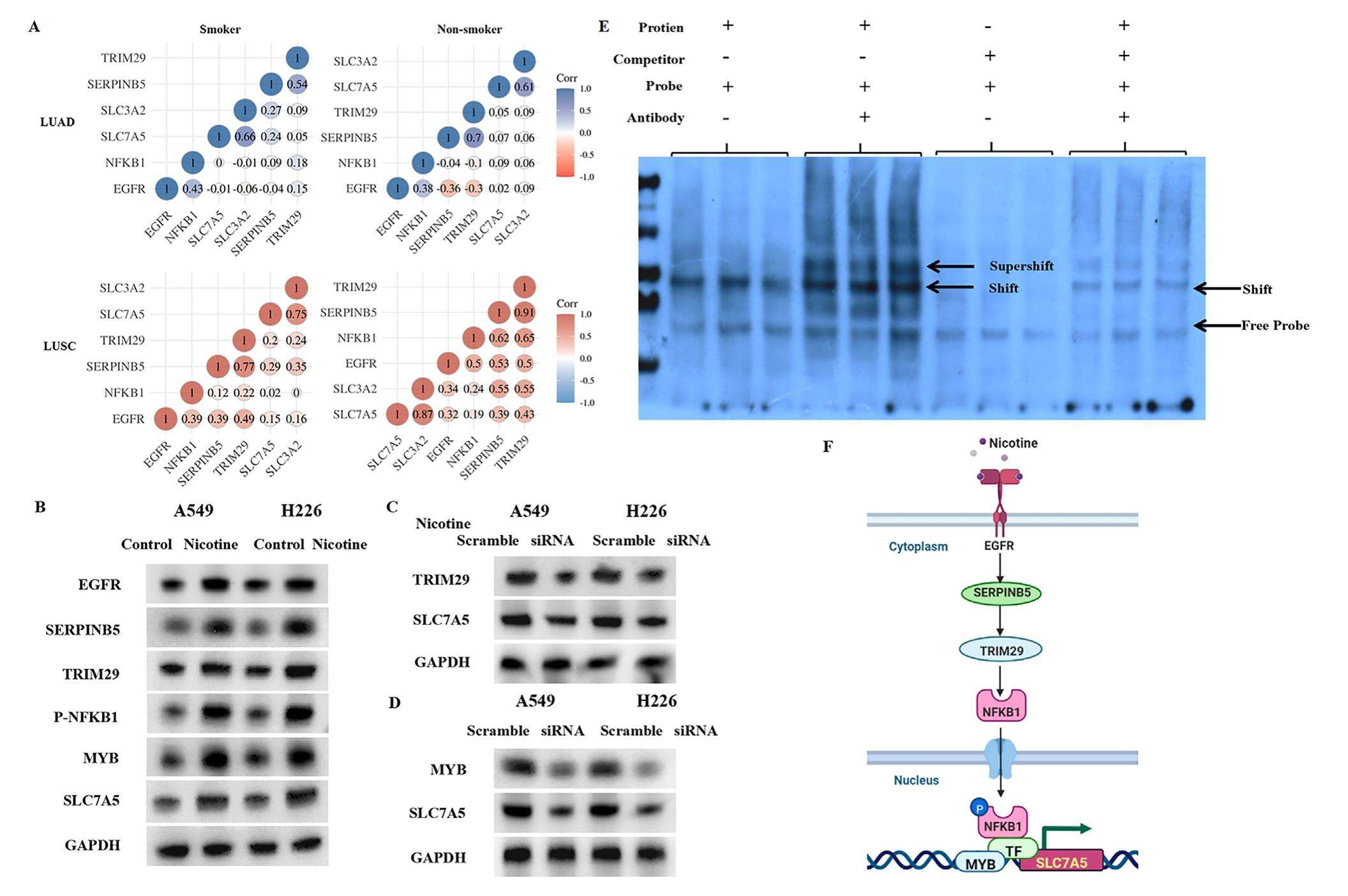
Nicotine up-regulates SLC7A5 expression depending on TRIM29 in non-small cell lung cancer


Non-small cell lung cancer (NSCLC) is a malignant tumor that poses a serious threat to human health. Adenocarcinoma (LUAD) and squamous cell carcinoma (LUSC) are two common types of NSCLC. They originate from glandular and squamous cells of the bronchial epithelium, respectively. Identifying gene changes during tumorigenesis is conducive to the selection of suitable treatment methods for patients. CD98 is a heterodimeric transmembrane glycoprotein, which is composed of a heavy chain and a light chain. CD98 heavy chain (CD98hc), also known as 4F2hc or SLC3A2, is an 85 kDa type II transmembrane glycoprotein, which consists of a cytoplasmic region (NH2 terminal), a single chain transmembrane region, and a huge extracellular region (COOH terminal). CD98hc can combine with the CD98 light chain, LAT1 (SLC7A5), to form CD98 protein through disulfide bonds. SLC7A5 is a 12 times transmembrane helix bundle protein composed of 501-535 amino acid residues. The overexpression of CD98 is closely related to the occurrence and development of NSCLC. Therefore, we screened the expression profiles of SLC3A2 and SLC7A5 in smoking and non-smoking patients with LUSC and LUAD. In addition, we attempted to determine the mechanisms underlying nicotine-induced SLC7A5 expression in LUSC and LUAD cells.
